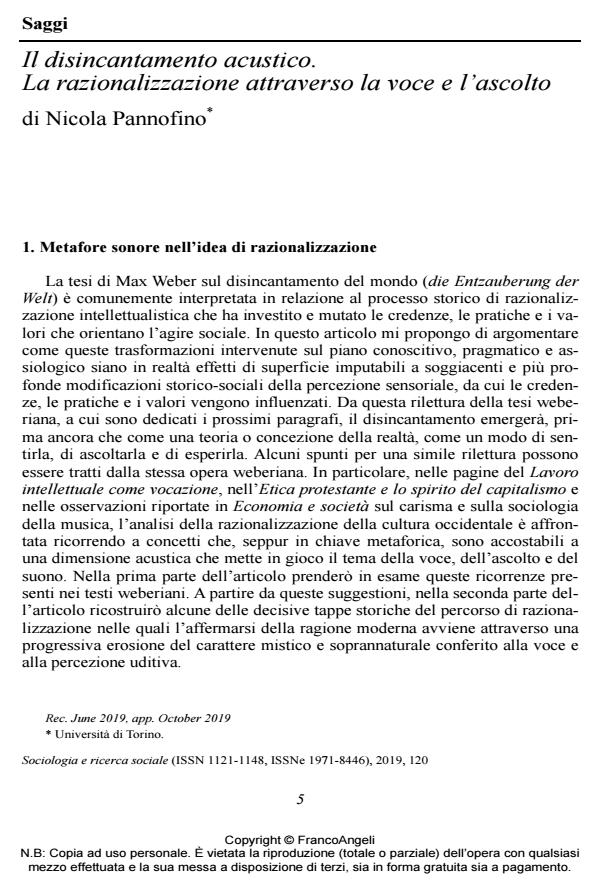Il disincantamento acustico. La razionalizzazione attraverso la voce e l’ascolto
Titolo Rivista SOCIOLOGIA E RICERCA SOCIALE
Autori/Curatori Nicola Pannofino
Anno di pubblicazione 2020 Fascicolo 2019/120
Lingua Italiano Numero pagine 20 P. 5-24 Dimensione file 210 KB
DOI 10.3280/SR2019-120001
Il DOI è il codice a barre della proprietà intellettuale: per saperne di più
clicca qui
Qui sotto puoi vedere in anteprima la prima pagina di questo articolo.
Se questo articolo ti interessa, lo puoi acquistare (e scaricare in formato pdf) seguendo le facili indicazioni per acquistare il download credit. Acquista Download Credits per scaricare questo Articolo in formato PDF

FrancoAngeli è membro della Publishers International Linking Association, Inc (PILA)associazione indipendente e non profit per facilitare (attraverso i servizi tecnologici implementati da CrossRef.org) l’accesso degli studiosi ai contenuti digitali nelle pubblicazioni professionali e scientifiche
This paper has two main purposes. The first is to show how in Max Weber’s analysis of the process of rationalization and disenchantment of Western culture, recurrent metaphors relating to sound and the sense of hearing are implicitly used. On this basis, the second purpose is to outline a reinterpretation of disen-chantment as a process that has affected the historical and social conditions of the human sensory experience through which the dimensions of magic and mys-tery of the world is perceived acoustically.
Nicola Pannofino, Il disincantamento acustico. La razionalizzazione attraverso la voce e l’ascolto in "SOCIOLOGIA E RICERCA SOCIALE " 120/2019, pp 5-24, DOI: 10.3280/SR2019-120001